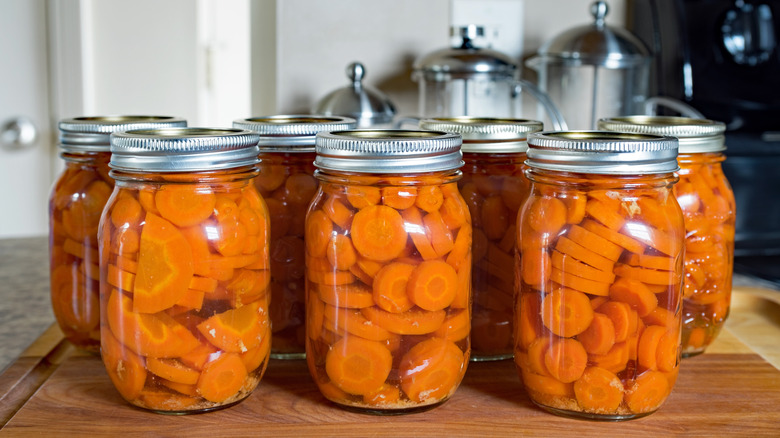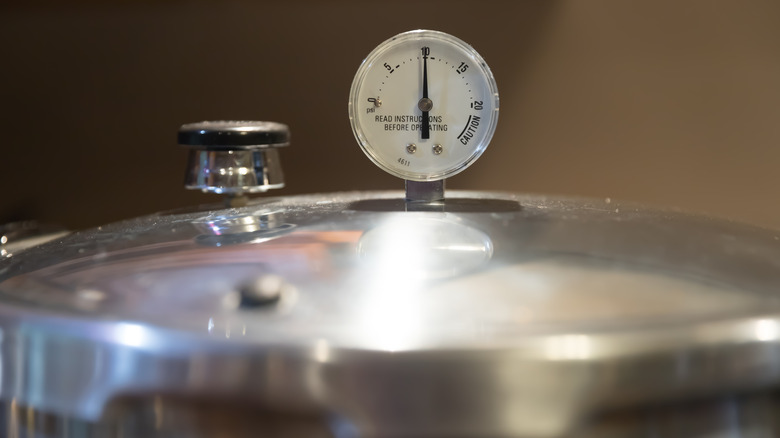Why You Need To Let Your Pressure-Canned Foods Cool Naturally
With the recent popularity of pressure cooking, it might seem like a pressure canner and a pressure cooker are interchangeable, but they aren't the same. One is for making foods quickly using pressure, like in an Instant Pot, and the other is for processing jarred food to make it shelf stable for an extended period.
Unlike pressure cooking, pressure canning isn't a quick affair. Canning as a whole can be a lengthy endeavor, and once the jars have been processed for the appropriate time, they can't immediately come out of the canner. If you've got multiple batches of food to can, for the sake of saving time, it might seem tempting to look for shortcuts where you're able to.
As recommended by Ball Corporation, you shouldn't disturb the canner in any way until the pressure returns to zero. Once you've reached zero pressure, you should wait 10 minutes before removing the canner lid, and when the lid is off, wait an additional 10 minutes before you pull the jars from the canner. It may seem harmless to try to speed up the cool-down time, but as Healthy Canning advises, just don't do it.
Rushing can mean spoilage
As much as you may want to throw a wet towel over the canner or place it in a sink full of cold water to cool it down faster, doing so could be risky. The National Center for Home Food Preservation reports that trying to force the canner to cool down quickly using the methods mentioned may warp your canner lid, cause liquid to escape from your jars, and even result in jars failing to seal.
While you shouldn't try to fiddle with the weighted gauge or anything else that can make the steam release faster, it is advisable to move the pressure canner off the hot burner to one that hasn't been used, per Clemson University's Home & Garden Information Center. As the Clemson University article points out, moving the canner, if you're able to do so safely without straining any muscles or burning yourself, is one way to help the canner cool down without running the risk of food spoilage or damage to the canning equipment.

